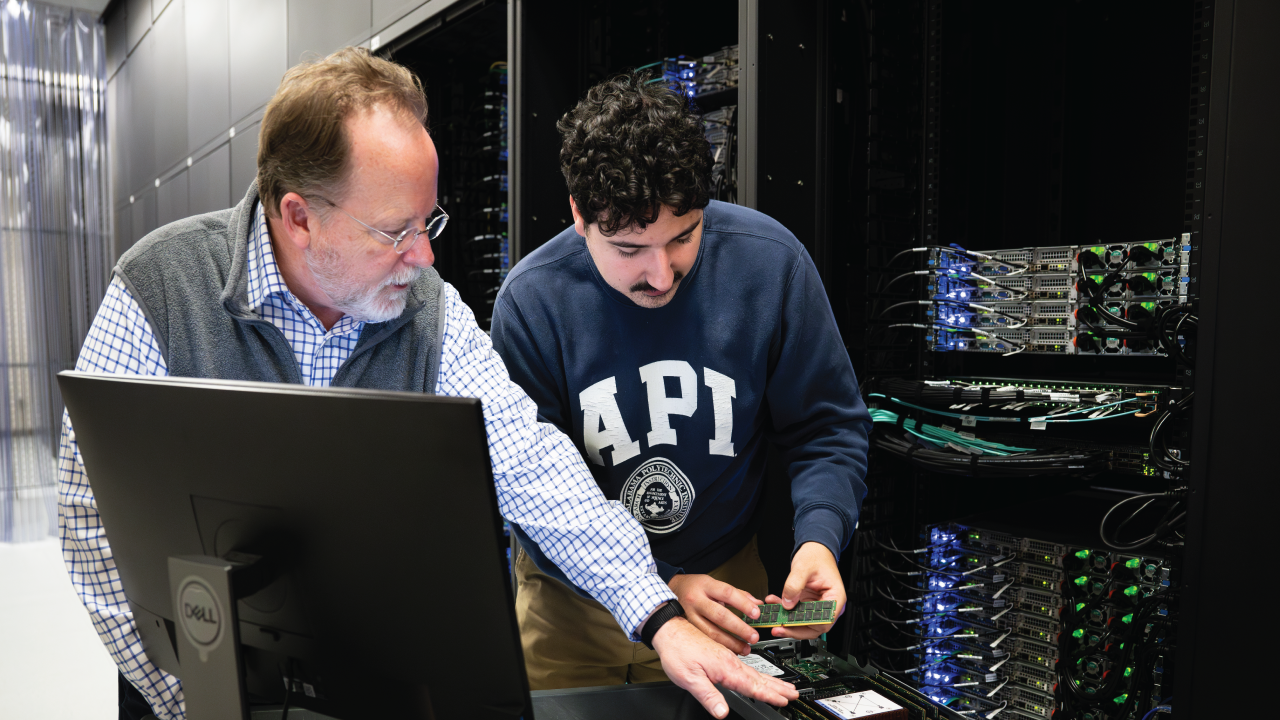content body

The Easley High-Performance Computing Cluster, named in honor of the esteemed Alabamian Annie Easley, has achieved the significant milestone of performing its 1 millionth job, facilitated by a researcher in chemical engineering. This remarkable achievement highlights the dedication and collaborative spirit deeply rooted within the university research community, in their pursuit of scientific discovery and advancement of the Auburn mission.
Established in 2020, Easley serves as Auburn University's primary high-performance computing resource. It is utilized by nearly 600 faculty and student researchers across all academic units and scientific domains, fostering transformative research around the clock. The importance of research computing resources and the expertise needed for its effective utilization is reflected in thousands of academic publications citing Auburn HPC as a contributing factor in addressing some of the world's most challenging and complex problems.
Since the introduction of the CASIC Cluster in 2013, Auburn University's computational power has exponentially increased over the past decade. Starting from an aggregated 20 trillion operations, it has now reached a theoretical capacity of 1 quadrillion mathematical operations per second. The continuous growth in technological adoption and expertise among the university's research community highlights its essential role in the modern research life cycle.
HPC systems, characterized by their complexity, can pose significant challenges for researchers who excel in their fields but may lack expertise in parallel computing clusters. To alleviate this burden, Auburn University's Office of Information Technology (OIT) research computing team handles various responsibilities, including procurement, installation, daily system operations, research software support, direct assistance and hosting monthly community training events.
Bradley Morgan, Associate Director of IT Infrastructure, emphasizes that research computing support functions are a highly valued and demanding aspect of their service offerings.
“Compared to traditional IT services, research computing is a very different world. The experimental and extreme nature of these systems demands a breadth and depth of knowledge that spans not only the technical domain but also requires a depth of knowledge into research methods and scientific processes,” said Morgan. “HPC systems engineers and researchers must bridge operational technology with science, forcing a break from their normal roles and balancing theory with practice. In the process, there is a shared proliferation of understanding and acquisition of skills. Through our experiences over the past decade collaborating with Auburn researchers, we have seen profound results from the formation of partnerships which have resulted in discoveries that may have not otherwise been possible.”
As we commemorate this significant milestone, the Office of Information Technology extends sincere appreciation to the collective efforts of university researchers, faculty and staff who have contributed to the success of the Easley Cluster. Together, we are poised at the forefront of new frontiers in computational science, guided by a shared vision of excellence and innovation.
Here's to celebrating one million jobs completed and embracing the limitless possibilities that await as we continue pushing the boundaries of knowledge and discovery with unwavering determination.
Learn more about high performance compute clusters at the Auburn HPC webiste.
Submitted by: kmp0025@auburn.edu




